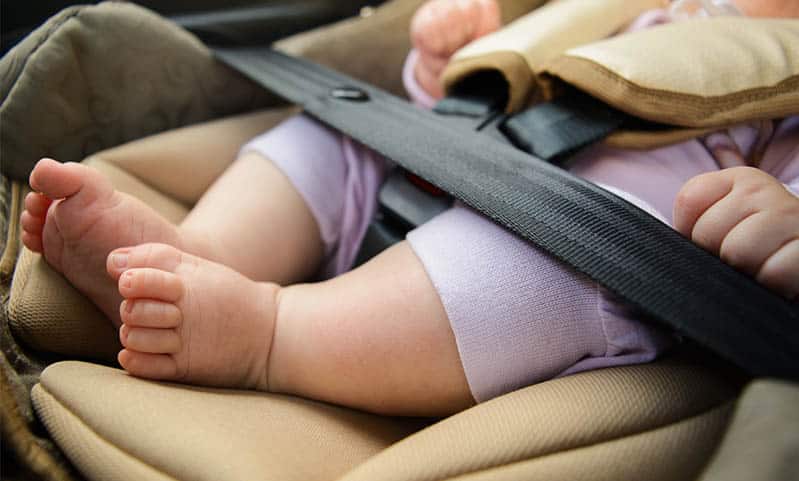With their spine still developing and heads large for their bodies, babies are at a higher risk of injury in crashes.
If you’ve placed your child riding facing forward, in a crash, his spinal cord could stretch, resulting in serious injuries or death.
Hence, we recommend riding with your baby facing the rear in a child safety seat to make sure that her upper body is cradled by the back of the car seat in case of a crash.
To be as safe as possible when driving, we advise using seat belts or restraints that fit correctly and also suit the size and age of the child.
There are regulations in place for which car seat parents should use for children.
They include:
- Before you move your child into a safety seat belt, make sure they can sit and control his or her head. Hence, kids under six months should be appropriately seated, fastened, and adjusted in a rearward-facing child restraint.
- Kids between 6 months – 4 years should be fastened and adjusted in a forward-facing or rearward-facing approved child restraint that features an in-built harness. However, kids under four years should not travel in the front seat of a car with more than two rows of seats.
- Children between 4-7 years should be fastened and adjusted in a forward-facing, or rearward-facing approved kid restraint that also features an inbuilt harness. Kids this age could also use an approved booster seat with a child safety harness or a well-fastened and adjusted seat belt. However, kids within this age range shouldn’t be permitted to sit in the front car seat unless you have occupied all the other car seats with kids under seven.
Parents should also note that it is hazardous and illegal to carry a child in a rear-facing seat in the front with an active airbag.
Also, forward-facing car seats in the same position are also not the best for toddlers.
For all under-five-year-olds, we recommend using the back seat.
Here are some of the things you must do to ensure that your baby is safe when you are traveling in the car:
Install the Car Seat as Soon as You Can
Because they are many things to take care of when expecting a baby, most parents either forget to install the car seat or wait until the last minute to do so.
Parents should take the time to get familiar with the car seat and read the instructions thoroughly.
This will help parents ensure that the car seat is installed correctly and that you are familiar with how to secure the baby properly in the seat.
Take time to learn the dos and don’ts of car seat safety. Ensure you have the knowledge you require to keep your baby safe.
Pay Attention to the Height and Weight of Your Child
Kids who are too tall for the car seat are exposed to an increased risk of severe head injuries during a crash.
All manufacturers have a height and weight limit on car seats.
Most children are more likely to outgrow infant car seats in heights before they even reach the minimum weight limit of car seats.
Hence, parents should pay attention to their kid’s height relative to the car seat’s shell and carefully compare it to the car seat’s height limit.
Correctly Position the Harness Straps
For rear-facing child car seat, the proper positioning of the harness straps is at or below the shoulders.
This is to prevent the baby from moving upward in case of a car crash.
Since babies grow fast, it is also crucial to keep checking the straps as often as possible because the harness requires frequent adjusting.
Avoid Placing Coats or Blankets Inside the Harness
With infants, swaddling is a common tendency.
However, when putting your infant in a car seat, it is crucial to make sure the harness is snug enough against your child’s body.
Make sure you can’t pinch between your thumb and forefinger in the harness webbing.
Avoid tightening the harness straps over any swaddling coats or blankets because it can leave an undetected slack in the harness, which could eventually lead to an increased risk of injury or ejection of the baby from the car seat in case of a crash.
If you need to provide extra warmth, first tighten the harness and then place the coat or blanket over the harness and the baby.
Correctly Position the Chest Clip
The chest clip is meant to keep the harness in the right position just before a crash.
Avoid positioning the chest clip too low because it could turn into ill-fitting shoulder straps.
However, if the chest clip is placed too high, it could result in breathing issues.
Always make sure you place the chest clip at armpit level.
To learn more about child safety when traveling, click here.
- This blog was generously provided by Childmode.com They can be reached at admin@childmode.com.
